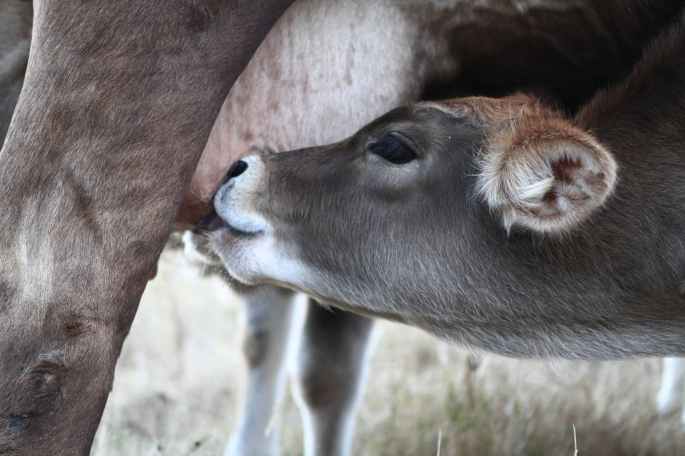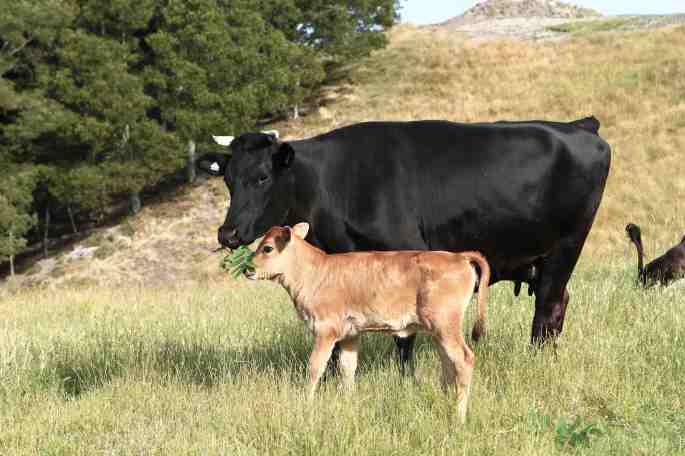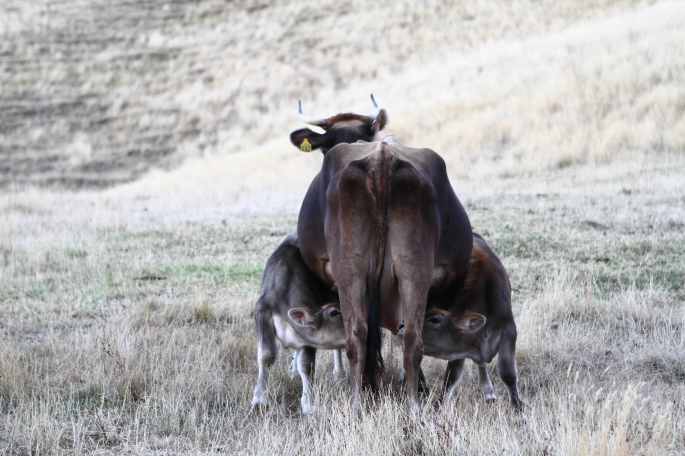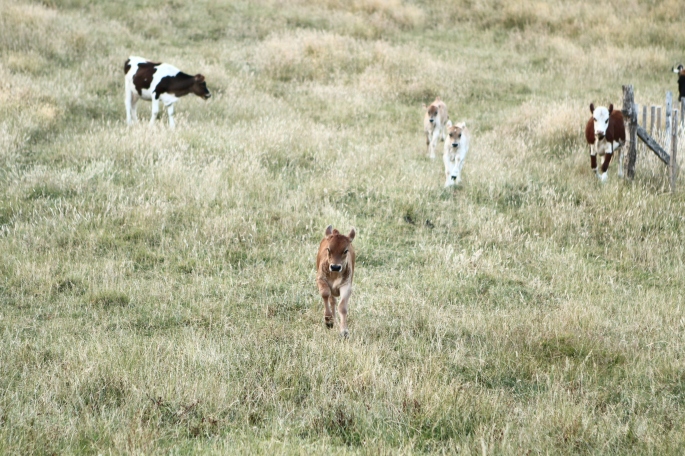 Three years on the land, three years of milking house cows… not that long in the scheme of things and compared to so many other “lifestylers” out there. But I think we have a system that works for us. But first let me introduce you to the reality of the dairy world…
Three years on the land, three years of milking house cows… not that long in the scheme of things and compared to so many other “lifestylers” out there. But I think we have a system that works for us. But first let me introduce you to the reality of the dairy world…
If you’ve ever considered going vegetarian or vegan for ethical reasons, dairy is definitely where you want to start… In commercial dairy farms, cows breed every year. No babies, no milk. Apparently a lot of people don’t realise that’s the only way a cow will produce white liquid gold. Or maybe they haven’t thought too much about the process. So each milking cow will have one (sometimes two) calf, every year. Some will be kept and eventually join the herd (females of course), as for the others… well, some dairy farms sell young calves (called bobby calves), none keep them and feed them until they get bigger and most end up being trucked to the local abattoir only a few days old and end up as dog food. So far, it’s not what nature intended but not an ugly picture as such. The reality of farming animals is one of compromise: how far we wish to compromise and deviate from the course nature would take is up to our values. Am I happy with factory farmed chicken and eggs, pigs and sows raised in crates (no and no)? How important is animal welfare when it comes to buying food or raising your own (food)? There are so many options put in front of us, for most consumers it’s a matter of working out what they are comfortable with.
How are the animals raised (or vegetables grown)? Where do they come from? How much does it cost? What is the packaging like (lots or not so much, maybe even none)? What are they fed (organic, conventional, GE)? How good is it? These are all questions we (should) ask ourselves. For anything we buy. It makes shopping a tiring and lengthy expedition the first few times, but I find that now I am so used to it I can scan the isles and know what I want or don’t want to buy according to my priority list. For starters I try not to buy anything too processed.
Back to our cow and calf situation… If I chose to become vegetarian again (not in the near future but who knows), the first thing I would stop buying is dairy. Because when that calf is born, it is taken away within hours of its birth, leaving a bereft mother bellowing and looking for its offspring. For the first few days after birth, a cow (like all mammals) produces colostrum, that special super rich milk. You won’t find it for sale on your supermarket shelves (yet), but it gets sold as a supplement, apparently for a high price. The calf often doesn’t even get one drink. I have read that the reasoning behind this taking them away so swiftly (apart from the monetary gain) is that the faster you take them the less painful it is. If you have ever seen a mother cow being separated from her newly born calf, you will know it is very far from the truth. Actually, I think it’s the opposite. As a mother, it draws tears, I feel her pain and desperation. On the contrary, when the calf is older, even thought she will be angry and looking for it, she won’t be as upset. Of course in an ideal world the calf stays with mum, it grows a happy life and we get milk.

I have been working on this ideal situation and I am pretty happy with the results. Admitedly we have only been in this milking business for 3 years (so I may not have enough experience to be tellings others how to do it), and we are only using it for ourselves. We are definitely not for profit (haha).
There’s this idea out there that if you have a house cow, you are stuck milking for 10 months of the year, once maybe twice a day. No holidays, sick days or week ends away unless you have a relief milker. Unless.
Unless you have the perfect share milker, willing to help day in day out, on short notice and who won’t take any holidays. In other words, I’m making the calf work for me. For free!

This system requires a bit of organisation, and a place to put the calf away at night. Since we keep our calves (for the freezer, or for selling), we would have to bottle feed them if we separated them from their mum. On top of milking the cow everyday. Our house cow gives us up to 10L a day at the height of her milk production. That’s way more than I want to use (I’m not fully making cheese yet either) and we don’t have pigs to feed any extra milk to. Last year, I was cheese making once a week and it fitted in well with all the other stuff we do. I wouldn’t do it more frequently for now. I actually worked out that if I milked every second day we got sufficient milk for our needs (milk, yoghurt and cheesemaking). The risk with infrequent milking is that the cow gets mastitis. Unless. Unless I leave the calf with its mum. That way I don’t have to feed it, and I don’t have to worry about daily milking. Until the calf is about 2 months old, it can actually stay with its mum full time. Dairy cows have been bred for milk production, and the amount of milk they produce is probably 4 times what a newborn calf can drink. So in the first couple of months, I milk daily, once in the morning. After that, our routine is pretty simple: get the cows from wherever they are in the evening and take them to the milking shed. Lock the calf in the milking shed at night then tie it up in the morning while I milk. I leave one teat for the calf, and once I’m done milking I let the calf off and it can finish the milking. The great thing about this system is that a calf will milk out its mum better than any machine or hand milking. And a cow that has been properly milked is at low risk of getting mastitis. A milk fed calf grows superbly well, hopefully stays healthier (this is the part I haven’t verified yet as we haven’t been doing it that long, but instinct tells me I must be right) and puts on good weight (think freezer goodness). If cow’s milk is the same as human milk, her milk will change in composition if the calf is sick, providing with antibodies. On top of all this, the calf learns about proper hierarchy and cow behaviour. Its mum is teaching it how to be a grown up calf, tenderly grooming it and teaching it what to eat. Dare I say it now, it’s a win-win!!!

What I wish to show here is that there are other alternatives to the systems used in intense dairy farming. We have the luxury to have our own dairy animals, and we don’t have to replicate what is done on a bigger scale. We can make this more humane by farming on a smaller scale and introducing other aspects than maximum profit from one product. We are holistic farmers.



